Meadow
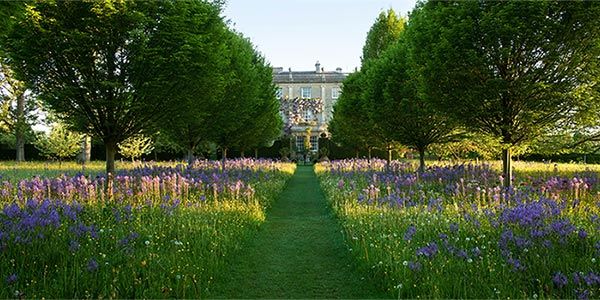
Prince Charles bought the 1790s house, called Highgrove, back in the 1980s, taken by its park-like setting and mature trees. Here the house, draped in wisteria, is seen from the wildflower meadow blooming with colorful camassias and buttercups. The almost six-acre meadow contrasts with the formality of the house and the sculpted hedges that surround the other gardens, and it reflects the environmentally conscious prince’s interest in native plants.
Sundial Garden
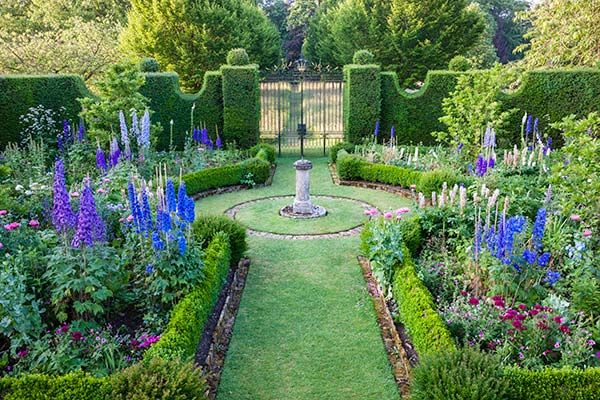
Highgrove had existing gardens, but they had fallen into a state of disrepair and some were uninspired. The Sundial Garden was the first garden that Prince Charles renovated and reworked to his own vision. Here, it is lush with deep blue, purple, and pink delphinium, the large flower spikes supported by single bamboo stakes. Soil enriched with generous helpings of homemade compost keeps the notoriously finicky flowers happy. The beds are edged in boxwood, with clipped yew shapes at the corners. Side note: Princes William and Harry grew up playing in these gardens.
Thyme Walk
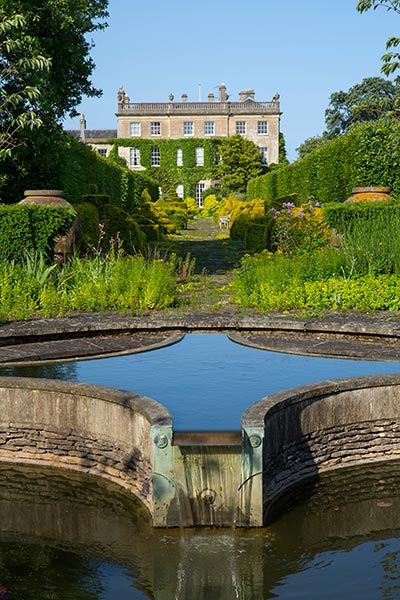
The view from the Lily Pool Garden up toward the house showcases the Thyme Walk. This path runs for more than 100 yards and is paved with granite and other stone remnants, with gaps left for some 20 varieties of thyme, which form a fragrant tapestry of green and gold in high summer. The central water feature, commissioned by Prince Charles, attracts birds year-round. To keep the climbing vines on Highgrove house in check, a cherry picker is brought in each January so that they can be clipped, preventing them from reaching the top-floor windows.
Carpet Garden
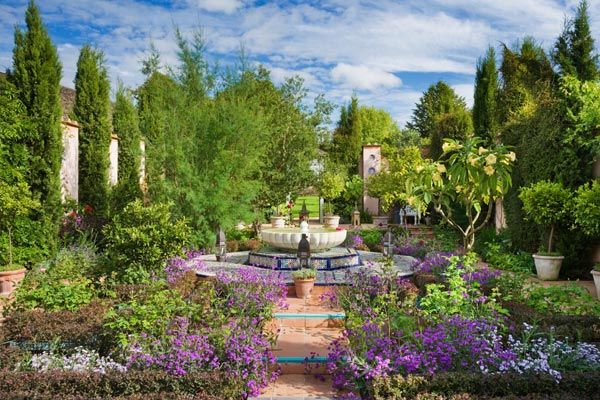
Illustrating the truism that design inspiration can come from anywhere, the Carpet Garden was influenced by a Turkish rug in the house. Based on a sketch by the prince, the space was designed by Emma Clark, an expert on Islamic gardens. The centerpiece is a bowl-shaped fountain elevated on a mosaic-tiled octagonal plinth. The nearby yellow Brugmansia ‘Angels Trumpet’ flowers in six-week cycles.
Kitchen Garden
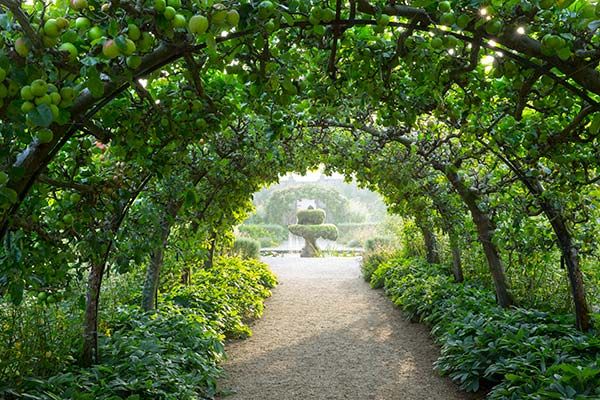
Brick walls enclose the ornamental—and entirely organic—Kitchen Garden, where many heritage varieties of apple, pear, and cherry are grown, as well heirloom vegetables. Espaliered trees, curving tunnels, and handsome arbors provide structure year-round. Here, the simple iron hoops of the apple tunnel have almost disappeared as the trees’ thick trunks become part of the garden architecture.
Cottage Garden
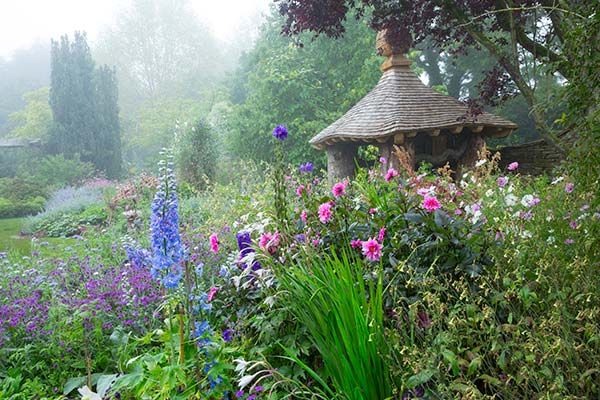
The Cottage Garden blooms well into late summer with phlox, coneflower, and butterfly bush. The Summerhouse was added in 2013 as a place for the prince to work without having to stop during rain showers. Tucked into a wide border of scented plants, this rustic structure’s roof, covered with undulating shingles, is supported by massive tree trunks taken from a pair of oaks that had to be felled. A perfect fairy-tale hideaway for a prince.
Get the Book

Highgrove: An English Country Garden, by HRH The Prince of Wales with Bunny Guinness (Rizzoli, 2015), is available at independent bookstores and at amazon.com.
The gardens at Highgrove are open to the public; for information on visiting, go to highgrovegardens.com.
